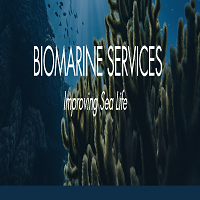Maintaining vessel integrity is crucial for both operational safety and regulatory compliance. One critical approach to ensure a vessel’s hull, propeller, and underwater systems remain in optimal condition is through an In Water Survey (IWS). These surveys, typically mandated by regulatory bodies or classification societies, allow shipowners and operators to assess the condition of a vessel without dry docking, making them a more efficient and cost-effective solution. This article explores the importance, process, and benefits of In Water Surveys for modern vessels.
What is an In Water Survey (IWS)?
An In Water Survey is a method of inspecting and evaluating a ship’s underwater structures while it remains afloat. Typically conducted by certified divers or remotely operated vehicles (ROVs), the survey examines critical areas such as the hull, propellers, rudders, and intakes to detect damage, corrosion, fouling, or other structural concerns. This survey is recognized as an alternative to traditional dry docking, allowing operators to maintain their vessels without interrupting schedules for extended periods.
Why Are In Water Surveys Essential?
1. Regulatory Compliance
Regulatory bodies such as the International Maritime Organization (IMO) and classification societies like the American Bureau of Shipping (ABS) or Lloyd’s Register mandate periodic hull inspections. In Water Surveys help meet these compliance requirements, especially for aging fleets or vessels with schedules that limit downtime.
2. Operational Safety
Hull integrity and underwater components are vital for safe navigation. IWS helps identify potential risks like structural weaknesses or biofouling, which can affect stability, maneuverability, and even fuel efficiency. Timely detection allows for corrective measures that prevent unexpected breakdowns.
3. Environmental Considerations
In recent years, environmental regulations have tightened, especially concerning biofouling, which can introduce invasive marine species to new ecosystems. Regular inspections through IWS reduce the chance of regulatory violations and promote environmentally responsible operations by ensuring hull cleanliness and biofouling management.
What Does an In Water Survey Process Entail?
The IWS process is thorough and adheres to strict guidelines to provide an accurate assessment of a vessel’s condition. Here’s an overview of the process:
1. Pre-Survey Preparation
Prior to the survey, a detailed plan is established with the surveyor or classification society. The plan outlines the areas of focus, expected outcomes, and safety protocols. In some cases, water clarity and weather conditions are considered to ensure the visibility and accuracy of inspection findings.
2. Conducting the Underwater Inspection
Certified divers or ROVs are employed to conduct the survey. High-resolution video and photographic documentation are often used to record the condition of the hull, propellers, rudder, and other components. Common inspection points include:
- Hull: Checked for signs of corrosion, cracks, dents, or coating damage.
- Propellers and Rudders: Assessed for damage, wear, or marine growth, which could impair propulsion efficiency.
- Intake Grates and Seachests: Inspected for blockages or fouling that could affect cooling systems.
3. Data Collection and Analysis
Surveyors gather visual and empirical data, which are later reviewed and analyzed to provide a comprehensive condition report. This data may include thickness measurements, which reveal corrosion levels and any loss of structural integrity over time.
4. Post-Survey Report and Recommendations
After the survey, the surveyor provides a detailed report with findings, photographic evidence, and maintenance recommendations. If serious issues are detected, further action may be required, such as hull cleaning, coating repairs, or in severe cases, dry docking for repairs.
Key Benefits of In Water Surveys
1. Cost Efficiency
In Water Surveys allow vessel operators to meet regulatory standards and identify maintenance needs without costly dry docking. This approach minimizes lost operational time, making it more financially viable for shipowners and operators.
2. Minimizing Downtime
By conducting the inspection while the vessel is in service, operators avoid extended downtime. This is particularly beneficial for commercial shipping companies where schedules are tightly managed, and even minor delays can incur significant costs.
3. Improved Environmental Responsibility
Regular underwater inspections support biofouling management, reducing the risk of invasive species transport. This is increasingly important as environmental regulations evolve to protect marine ecosystems from anthropogenic disturbances.
4. Enhanced Maintenance Planning
With periodic in-water surveys, shipowners can better anticipate and plan for maintenance activities, reducing the likelihood of unexpected failures and costly repairs.
Challenges of In Water Surveys
While In Water Surveys offer a range of benefits, they also come with challenges:
- Water Visibility: Poor water conditions can obscure critical inspection points, potentially impacting the survey’s accuracy.
- Limited Accessibility: Certain underwater areas may be difficult to reach, particularly for large vessels or complex hull structures.
- Specialized Equipment and Expertise: The need for specialized ROVs, high-resolution cameras, and certified divers can make in-water surveys technically demanding.
Innovations in In Water Survey Technology
Technological advancements have significantly improved the efficiency and accuracy of In Water Surveys. Today, ROVs equipped with high-definition cameras, 3D imaging, and sonar technologies allow for precise inspections without diver intervention. These advancements are instrumental in achieving higher-quality inspections and reducing the physical risks divers face.
1. Remotely Operated Vehicles (ROVs)
ROVs can access hard-to-reach areas, making them invaluable for inspecting complex hull structures or components in poor visibility conditions. With advanced imaging technology, ROVs provide accurate data, reducing the margin for error.
2. 3D and Sonar Imaging
3D imaging captures detailed visuals of the hull and underwater structures, allowing for more accurate data collection and analysis. Sonar imaging is also used to identify structural issues that may not be visible to the naked eye, providing a more comprehensive assessment.
Choosing the Right In Water Survey Provider
When selecting an IWS provider, shipowners should consider the following factors:
- Certification and Expertise: Ensure the provider has certified divers or qualified operators for ROV inspections.
- Technological Capabilities: Modern imaging technologies such as 3D imaging and high-definition video recording are essential for precise inspections.
- Experience with Vessel Types: Different vessels have unique structural considerations. A provider experienced with specific vessel types ensures a more thorough inspection.
Conclusion
In Water Survey offer an effective, efficient, and environmentally friendly alternative to dry docking for underwater inspections. They support regulatory compliance, enhance operational safety, and allow for proactive maintenance, all while reducing costs and downtime. With advancements in inspection technology and increasing environmental regulations, In Water Surveys are becoming an indispensable tool in modern fleet management. By investing in regular in-water inspections, shipowners and operators can ensure their vessels’ long-term performance, safety, and compliance with industry standards.



